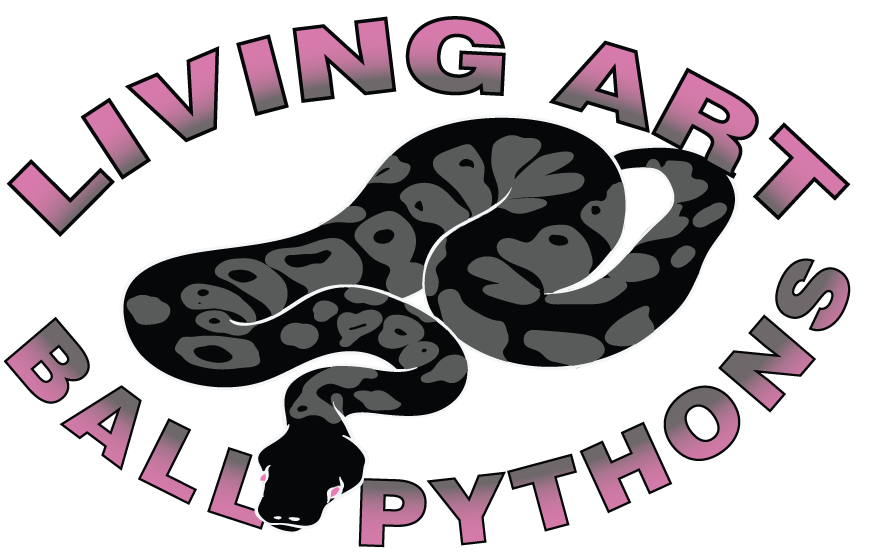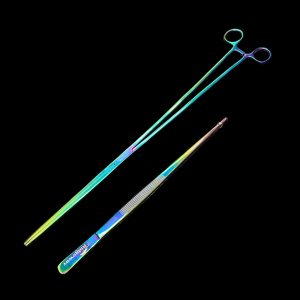Guidance from Ashlie’s Living Art Ball Python’s
Ball Pythons are considered to be thigmotactic, meaning they keep large areas of their bodies in contact with surfaces of the environment in order to feel safe, limiting how much of it is exposed to open space and therefore predators.
This thigmotactic behaviour drives Ball Pythons to seek out small hide spots to squeeze into, such as under logs and rocks, and move along their enclosure decorations rather than open floor. Ball Pythons along with all reptiles are poikilothermic, meaning their body temperature varies with the temperature of their surroundings, and therefore require a heat source to enable them to carry out bodily functions such as digestion and immune function.
Most vivariums are made of glass, which although look nice are actually a very poor material for the conduction of heat and insulation which is a
huge concern voiced by scientific recommendations (Orlando Diaz-Figueroa, ‘Basic husbandry and nutrition of snakes’ (2008)) and can not only lead to unstable environmental temperatures, but also forces a thigmotactic snake, moving along the boundaries of a glass vivarium, to inevitably come into contact with a cold surface. This is reduced in vivariums which are partially made from wood/melamine or other materials, however most still rely on glass for at least one side of the enclosure.
Whereas in contrast, enclosures made from plastic tubs, such as modified storage boxes (e.g. RUBs Really Useful Boxes) provide not only a stable internal temperature but also are an insulating material for thigmotactic snakes to move along. This not only provides a constant ambient temperature for body function, but also prevents the snake cooling quickly whilst exploring the edges of the enclosure. Good well designed Racks using modified storage boxes give that feeling of security and usually provide better conditions by way of heating and humidity levels therefore enabling your snake to thrive.
Ball Pythons, as mentioned before, prefer smaller spaces and enclosures. If their enclosure is too large, then they will refuse to feed and can become defensive in behaviour. RUB setups are the most ideal set up which will make keeping your ball python much easier in terms of feeding and humidity levels, enabling your ball python to thrive and feel secure.
Although some Ball Pythons may do well in set ups such as vivarium’s 80-90% will not. This is due to several reasons; Vivariums usually provide too much height for a ball python; the sheer size of the vivarium can be very stressful to the ball python. Vivariums tend to use ceramic heat bulbs which dry the air making the appropriate humidity levels difficult to achieve. A Ball Python should shed in one piece, if a Ball Python has stuck shed this is a humidity issue.
If you are keeping more than a few ball pythons I would recommend using a racking system which adds to the feel of security as they are enclosed, only open at one side.
If you are only keeping a small number of ball pythons and do not want a rack system, then I recommend using a RUB set up.
We now have 12 Litre Starter Set Up Kits available!
The set up comes with a Divider making it suitable for Hatchling Ball Pythons, simply use the Divider until the Hatchling reaches the appropriate size (approx. 350g) then remove the Divider to double the Ball Pythons floor space!
The Divider also acts as a perfect Hide Box for the young Ball Python. The set ups come with everything needed, water bowl, heat mat, thermostat and divider. The only additional equipment I recommend is an infrared thermometer gun.
We also now have the set ups in a 33 Litre version for grown on and adult Ball Pythons.
RUB size guide:
(All are approximates)
| Hatchling ball python straight out of the egg up to 150g | 3.5 Litre Braplast tub |
| Hatchling ball python 150g – 350g | 5 Litre Rub |
| 350g – 550g ball python | 9 Litre RUB |
| 550g – 900g ball python | 12 Litre RUB |
| 1kg – 2.5kg adult ball python | 33 Litre RUB |
| 2.5kg plus ball python | 50 or 70 Litre RUB depending upon length and confidence. |
Some Royals are more confident than others, however most are sensitive to change and can stop eating if moved up sizes too quickly or placed in an environment which is too large. If you step the Ball Python up into a larger set up and it stops eating, move back down to the previous set up and he/she should start feeding again. Wait 2/3 months of consecutive feeding and then try moving up size again.
I keep my Ball Pythons on Honeycomb Card tub liners and paper towels, this is the easiest substrate regarding cleaning and hygiene and can also show more easily if there are any issues with the snake. For example when purchasing a new snake, you should always quarantine away from any reptiles you already have and keep on a substrate which will enable you to see any issues easily. Paper towels and Honeycomb Cards easily show any issues such as mites whereas on other types of bedding this could easily be missed and therefore go untreated for some time and also place the rest of your collection at risk if the snake is then moved into, for example a rack with your other snakes.
I recommend placing any new snake into an isolation rack or RUB. The 12 Litre Starter Set Up kits and 33 Litre Set Up Kits are also ideal as a quarantine option for any new Ball Python. This should be set up in a separate room where possible, to any other snakes or reptiles for a 4-month period. This provides adequate time for any signs of ill health to be seen and therefore you are not placing your other snakes at any risk of a possible infection or infestation. I also use Coconut Husk/Chip Substrate for my ball pythons. We have recently added Herp Chip to our online store which is much easier to use than the traditional coconut substrates as no preparation is required and is completely dry so humidity is much easier to control. It is important to be very careful in selecting other substrates. Some substrates such as bark are not only unsafe but can carry mites. Substrates containing Cedar should never be used as it contains oils which can be deadly to reptiles. Substrates such as sand, shavings and other loose substrates are not ideal as your Ball Python can swallow the substrate or get stuck in their mouth when eating, yawning or shedding their skin. Swallowing substrate over time can lead to blockages which would require veterinary treatment.
The most suitable heat source which I would recommend is a heat mat, which MUST be connected to a thermostat, placed underneath the RUB not inside it. A thermostat is essential for controlling temperatures and without the snake could easily burn.
If you are housing in a Viv there are many issues with using ceramic bulbs, if using a ceramic bulb, it must have a guard around it which is the correct size to protect your snake. Ceramic bulbs make keeping correct humidity levels a real issue as they dry the air and humidity is very important particularly when your Ball Python is trying to shed his skin.
You will need thermometers or what I recommend using is a handheld laser infrared digital temperature gun. This is a very useful tool to have as it enables monitoring temperatures very quick and easy, these are now available on my store. It is very important to get accurate temperatures for your ball python. You cannot rely on the numbers on your thermostat and assume that will be the temperature in your RUB, it may actually be much hotter or cooler than the number on the dial or screen so should always be checked with a temperature gun and the thermostat adjusted accordingly. Once desired temps are achieved the thermostat will maintain this temperature.
Ball Pythons require a ‘hot spot’ and a ‘cool spot’ to enable them to regulate their temperature. Hot end temperatures need to be between 32/34 degrees. Cool end temperatures ideally need to be around 27 degrees. Lighting is not necessary for Ball Python’s; the natural light in the room is sufficient. Bright overhead continuous lighting is stressful to snakes,especially species such as the Ball Python.
Ball Pythons are very secretive snakes and enjoy squeezing into small spaces to feel safe and secure, therefore, to ensure a happy ball python a hide is essential. The hide box needs to be only slightly larger than the python. Ideally use two hides providing one at each end of the enclosure so that it doesn’t have to choose between staying in the hot or cool end.
We offer a range of hides on our website.
An appropriately sized water bowl is required and fresh water should always be available. A good size guide for a water bowl is to make sure if your ball python wanted to squeeze into his bowl for example when in the shed, could he fit? Ball Pythons seem to enjoy a soak from time to time and will climb into their water bowls. The water bowl should be cleaned and disinfected twice weekly and fresh water provided daily.
Ball Pythons require humidity levels of 50 to 60 percent. When your Ball Python is going into the shed it requires higher humidity levels around 90C. It is important to increase the humidity levels from the first moment you notice your snake going into the shed and maintain this humidity until the Python completely sheds. To raise the humidity, I recommend moving the water bowl to the back of the RUB where the heat is, ensure the bowl is full and spill a little warm water at the back, so it is damp but not wet. The RUB wants to stay like this throughout the entire shed process. Ensure to change the paper every couple of days and provide fresh water. Signs your Ball Python is going into the shed are milking or clouding of the eyes; pink belly and dulling of colours. Before a Ball Python sheds its skin, it will clear and appear ‘normal’ again, it is important to still maintain the increased humidity levels as this is a sign that the Python will shed in the next 1-2 days.
I hope this information is helpful, but should you have any further questions please contact us via either our Social Media pages;
Alternativley, you can contact us using our contact form:

